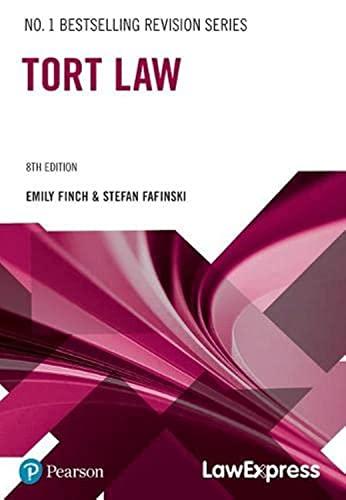Question
The Article: Air Canada lawsuit accuses Airbus of negligence in Halifax crash landing Aly Thomson The Canadian Press Published Thursday, March 30, 2017 11:18AM EDTLast
The Article:
Air Canada lawsuit accuses Airbus of negligence in Halifax crash landing
Aly Thomson
The Canadian Press
Published Thursday, March 30, 2017 11:18AM EDTLast Updated Thursday, March 30, 2017 2:07PM EDT
Transportation Safety Board investigators and airport firefighters work at the crash site of Air Canada AC624 that crashed early Sunday morning during a snowstorm, at Stanfield International Airport in Halifax on Monday, March 30, 2015. (Andrew Vaughan / THE CANADIAN PRESS)
HALIFAX -- Airbus's negligence contributed to a crash landing at Halifax Stanfield International Airport two years ago, Air Canada claims in a lawsuit against the French aircraft manufacturer.
In a statement of claim filed in Nova Scotia Supreme Court, Air Canada (TSX:AC) said Airbus SAS failed to identify shortcomings of the Airbus 320.
The document said it did not advise that in certain conditions, the plane's flight path angle could be affected by external forces.
It also claims Airbus failed to incorporate a warning system to alert pilots to a deviation from the planned flight path angle.
"(Airbus) failed to provide adequate and/or accurate information as to how pilots should correct a deviation in the flight path in circumstances where manual intervention was required," the March 28 claim said.
None of the allegations have been proven in court.
The statement of claim does not specify an amount for damages, but says: "(Air Canada) pleads that (Airbus) was negligent and that its negligence caused or contributed to the damages claimed in the within action."
"Damages claimed herein include the damage sustained by the aircraft and other expenses related to the subject incident," it said.
Airbus did not immediately return a request for comment Thursday and has not filed a statement of defence. Air Canada declined to comment, as the matter is now before the courts.
Flight 624 hit the ground about 200 metres short of runway 05 shortly after midnight on March 29, 2015, as it approached in gusty winds and heavy snowfall.
The twin-engine plane bounced into the air and crashed near the runway threshold before careening along the tarmac for another 570 metres.
An engine and the plane's landing gear were torn from the airframe amid a shower of sparks and leaking fuel, but there was no fire and the fuselage remained largely intact.
More than two dozen people were injured in the crash landing, which is also the subject of a class-action lawsuit. The defendants in that lawsuit include Air Canada, Airbus SAS, the Halifax International Airport Authority, Nav Canada and Transport Canada.
Air Canada's lawsuit against Airbus says the flight crew correctly configured the aircraft for landing, including entering the correct flight path angle into the flight computer.
"Since the aircraft was correctly configured for approach and landing and the approach was stable, the aircraft should have intercepted the threshold to runway 05 at an altitude of 50 feet," the claim said.
"Instead, the aircraft descended at a steeper angle than expected and touched down short of the runway."
Using the article above answer the following question:
Analysis of a legal claimfor negligence that might be madeagainst the business. The analysis must be clearly based on and reflect the elements of the tort of negligence, and should go on to cover possible defences that may be raised by the defendants.
You must refer to the facts given in the story, but you may alsosuggest factsthatmight be proven through further investigation. Be clear in your argument which type of fact you are talking about.
Analysis means stating the applicablelaw(presentation of definitions, explanations of concepts, statements of rules, tests, etc.), ideally supported by referenced quotations from the textbook, and then applying the law to thefactsof the case in discussion of and arguments about liability, including arguments forbothsides when these can be made.
The arguments in your analysis should be plausible, but they will not be evaluated on how persuasive they are. The intent of this assignment is to help you develop the ability to recognize business risks, not require you to act like a lawyer.
Step by Step Solution
There are 3 Steps involved in it
Step: 1

Get Instant Access to Expert-Tailored Solutions
See step-by-step solutions with expert insights and AI powered tools for academic success
Step: 2

Step: 3

Ace Your Homework with AI
Get the answers you need in no time with our AI-driven, step-by-step assistance
Get Started


